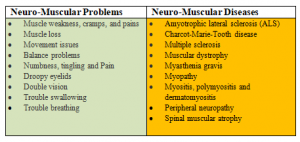Who doesn’t want ahead of luxuriant hair, that is well-groomed and styled? Even those who are not too bothered about their clothes, tend to fret about their hair, especially if they suffer from hair loss. Hair loss is a global problem for millions of people of both sexes, across age-groups. Little wonder then, that hair care products and treatments, constitute a multi-billion industry today.
Expensive hair-regeneration treatments hold out the promise of ‘crowning glory’ to those who are losing hair, but they need to be done only by experts who can gauge the dangers and side-effects on those undergoing treatment. Drugs and drug-based solutions are popular too, but they come with their own set of side-effects and contraindications, whether they are used topically or consumed internally.
The drawback with hair care products and drugs is that they don’t have a holistic approach to hair-health, because problems related to hair are not only localized but also have deeper roots in the form of nutrient deficiencies and imbalances in the body.
Some of the factors causing hair loss are:
Physical causes like vigorous brushing, hair dyes, chemicals and heat involved in a procedure like hair straightening and perming.
Effects of dust, pollution and hard water.
Stress and anxiety.
Deficiency of iron and zinc in the body.
Imbalances in the liver function.
As you can see, the last two factors are not localized but are still directly connected with hair-health. But there is no cause for despair. There is an excellent solution to all hair-related problems, which not only solves your hair problems but also tones up your liver and general health.
Keshya, is that wonderful Ayurvedic health supplement, that has been developed by the world-renowned Ayurvedic Physician, Dr Mukesh D. Jain, with some of the most effective, scientifically proven, and time-tested herbs. It has been clinically evaluated for over two decades for its efficacy in controlling hair loss and promoting overall hair health and is completely safe for both men and women.
The most important ingredient of Keshya is Bhrangaraj, (Eclipta Alba), which is also known as Keshraj in Assamese and Karisalankanni in Tamil. This Ayurvedic herb is scientifically verified for its efficacy as a liver cleanser and tonic. As we saw above, hair loss can be the result of the imbalance of pitta in the liver – one of the tridoshas elucidated in Ayurveda. Ranjak Pitta, produced in the liver directly affects hair health, including thinning, premature greying and discolouration of hair.
In addition to correcting the imbalance of pitta, Bhrangaraj has a host of other hair-related benefits too. It boosts blood circulation to the scalp, which ensures better nourishment for the hair follicles, resulting in healthy hair growth. This miraculous herb is regarded as the ‘Rasayana’ in Ayurveda – an ingredient that rejuvenates and slows down the ageing process. It has been proven to be better than Minoxidil in the regeneration of hair, without any side effects!
Besides Bhrangaraj, there are other excellent herbs in Keshya, which have a wide range of benefits.
Emblica Officinale acts as an antioxidant and helps fight free radicals that damage the hair.
Centella Asiatica (Gotu Kala) increases blood circulation to the scalp and nourishes hair follicles, strengthening them.
Rajat Bhasma is a rejuvenating herb that helps brain nerves, fights against anxiety and stress and boosts immunity.
Mouktik (Pearl) Pishti is natural calcium that corrects the pitta imbalance in the liver, prevents premature greying and discolouration, and helps in hair growth.
Aloe Vera contains enzymes that help repair dead cells on the skin of the scalp. It also conditions the hair and prevents itching and dandruff.
Why waste money on expensive hair care products that might not deliver what they promise or risk your health with drugs that come with side-effects? Go for the ancient wisdom of Ayurveda in the form of Keshya, which is both safe and effective.
Minoxidil, a vasodilator used to treat cardiac problems is applied on the scalp in the form or drops and foam, to help hair growth. Though how it works is not very clear, it is supposed to be effective. The other steroidal drug, Finasteride, is used in the treatment of baldness in men and works by decreasing the amount of Dihydrotestosterone (DHT), a male hormone linked to hair loss and other health problems.
Questions and concerns should be sent to Dr Mukesh D Jain on his Whatsapp number +919826180335















Recent Comments